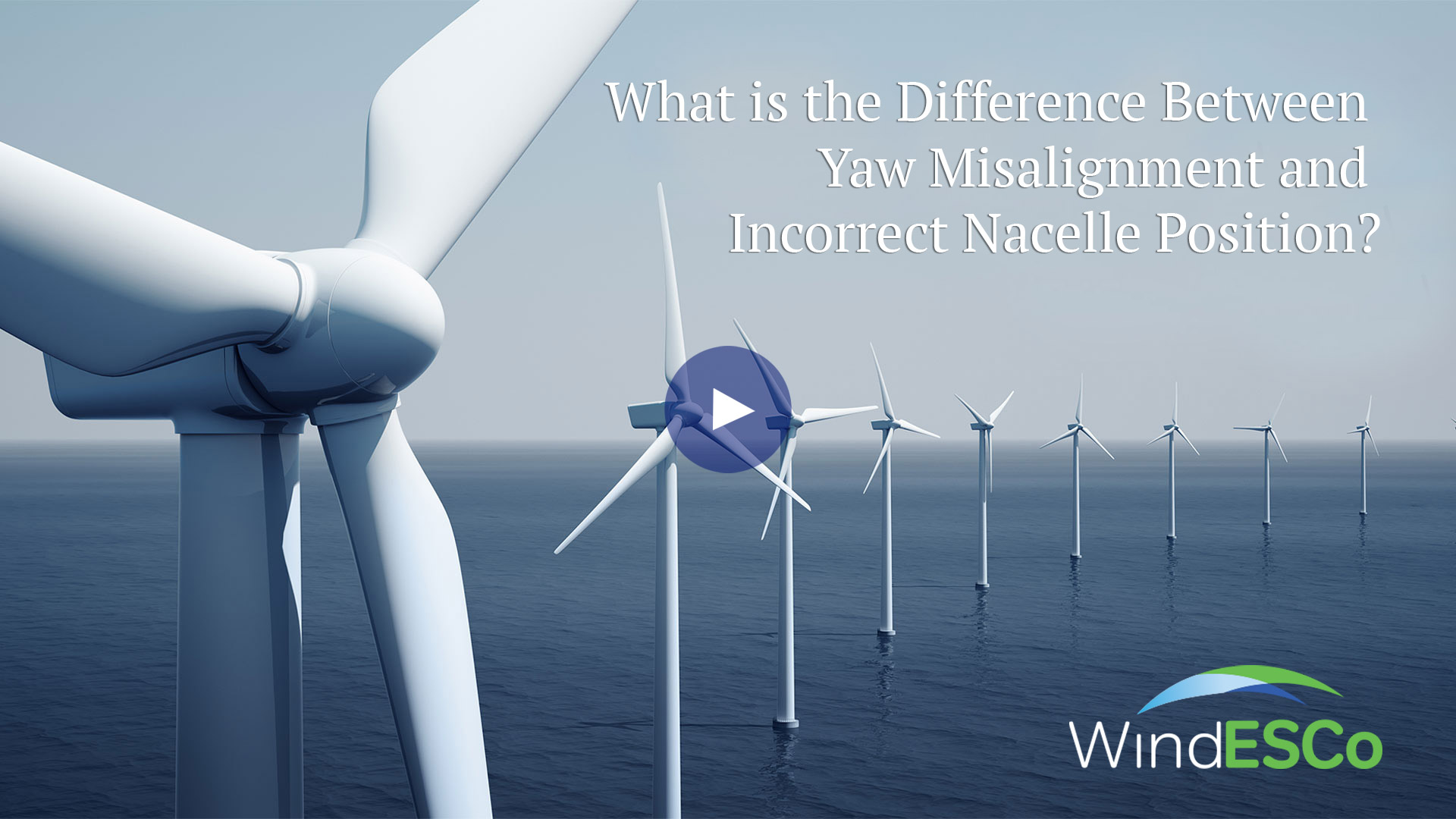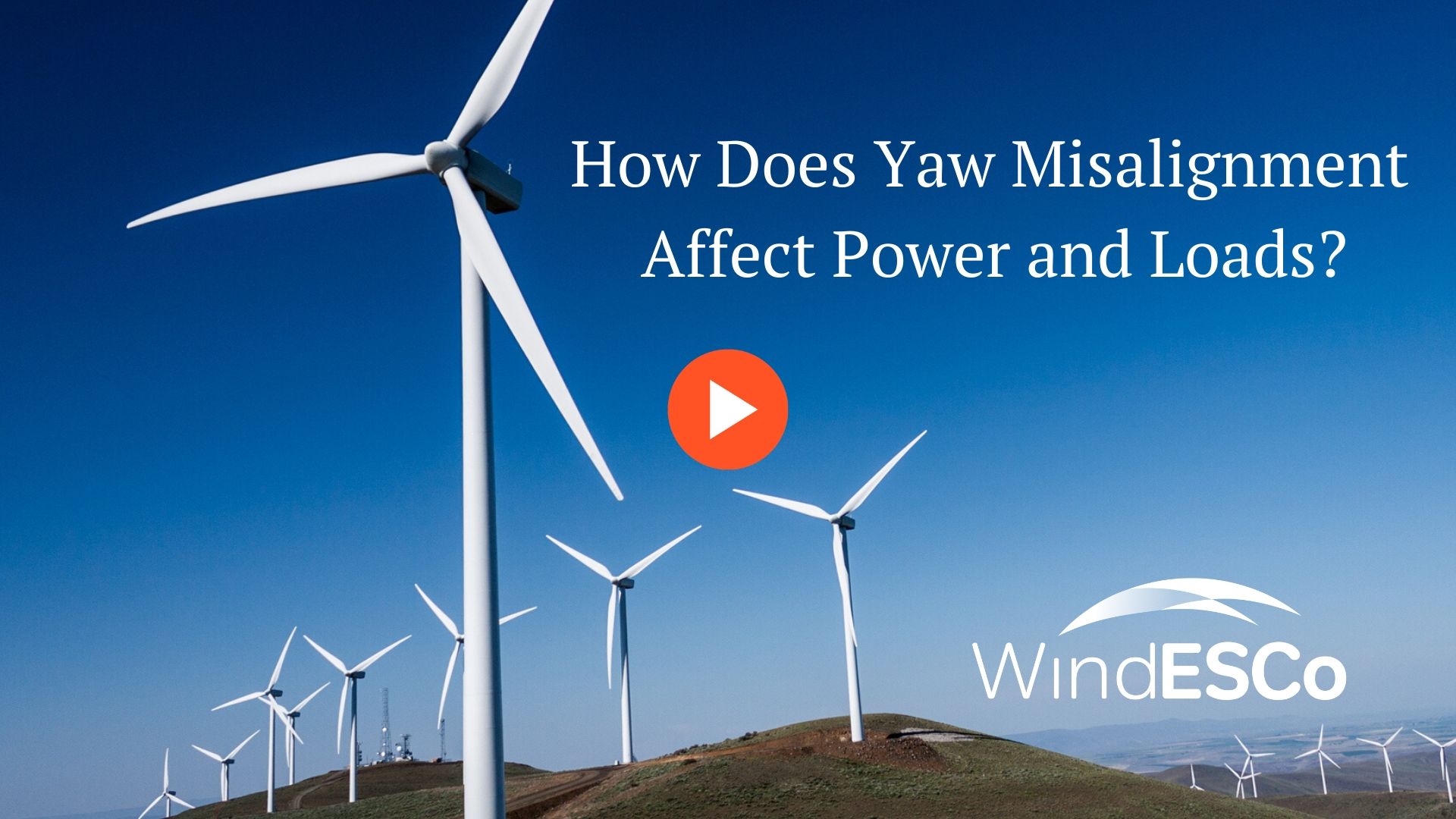How to Correct Yaw Misalignment
We've spent quite a bit of time discussing yaw misalignment. Our past blogs have addressed what yaw misalignment is, the different types, how it can...
.png)
One of the most common issues that wind farm operators face is static yaw misalignment. Because this problem is invisible to the turbine controller, wind projects must use specialized methods to identify and address the issue.
One significant challenge to measuring yaw misalignment is that its value may vary over time due to wake effects, wind flow characteristics, and even disruptions to the nacelle anemometer. To compensate for these situations, continuous monitoring of the yaw misalignment is ideal. Unfortunately, not all existing solutions can provide continuous estimates, so periodic recalculation of the yaw misalignment is required.
If you're operating under a full-service agreement, your OEM may offer calibration techniques to align the nacelle anemometer to the turbine axis. Keep in mind, however, that not all OEMs provide such services, and even a well-aligned nacelle anemometer could have yaw misalignment.
There are many different ways that you can detect yaw misalignment, ranging from expensive new hardware to utilizing the equipment you already have. What are the standard solutions available, and which one is ideal for your wind project?
Traditionally, yaw misalignment detection has relied on hardware solutions: physical devices that you can mount on your turbines or nearby measurement devices. Typical hardware solutions include:
Light detection and ranging (LiDAR) systems can be mounted on top of the nacelle to measure wind direction. LiDAR projects light, which bounces off of particles in the air and reflects back into a receiver. By measuring the reflected light waves, the software can calculate wind speed and relative wind direction. If the LiDAR is in the control loop, it can direct the turbine to turn into the wind.
We find LiDAR to be a good R&D tool, but not suited for mass application.
It is difficult to measure wind direction with a nacelle anemometer because of its position on the turbine. When mounted on the nacelle, the anemometer sits behind the rotor blades, which distort the wind flow. A newer solution is the spinner anemometer. This anemometer is mounted on the spinner in front of the blades.
A nearby met tower can be used to calculate wind direction. This approach may seem cost-effective because met towers are traditionally installed when siting wind farms, but the method is outdated and, ultimately, costly.
It’s tempting to turn to a hardware approach for yaw misalignment detection, but these options come with a series of disadvantages. They’re expensive, difficult to install, and—depending on the method you use—unreliable.
In recent years, more data-based approaches have begun to emerge as an answer to these unsatisfactory hardware solutions. Data-based solutions are different because they don’t require new equipment. They use the turbine’s own measurements to estimate and correct yaw misalignment. There are a few distinct advantages:
While there are many options for addressing yaw misalignment, the data-based approaches have consistently demonstrated that they can deliver maximum revenue at minimal cost by estimating and correcting the static yaw misalignment that exists in most turbines.
Want to see the process in action? In a recent engagement with UPC Renewables, WindESCo helped the wind plant boost AEP by 2% by analyzing their existing SCADA data and providing actionable solutions. Download the case study to learn more.
.jpg)
We've spent quite a bit of time discussing yaw misalignment. Our past blogs have addressed what yaw misalignment is, the different types, how it can...

For any wind project, your turbines must face into the wind as often as possible to maintain optimum energy output. However, there are quite a few...

We've previously discussed yaw misalignment in-depth: what it is, what causes it, and how to measure it in your wind project. Today we'll be diving...